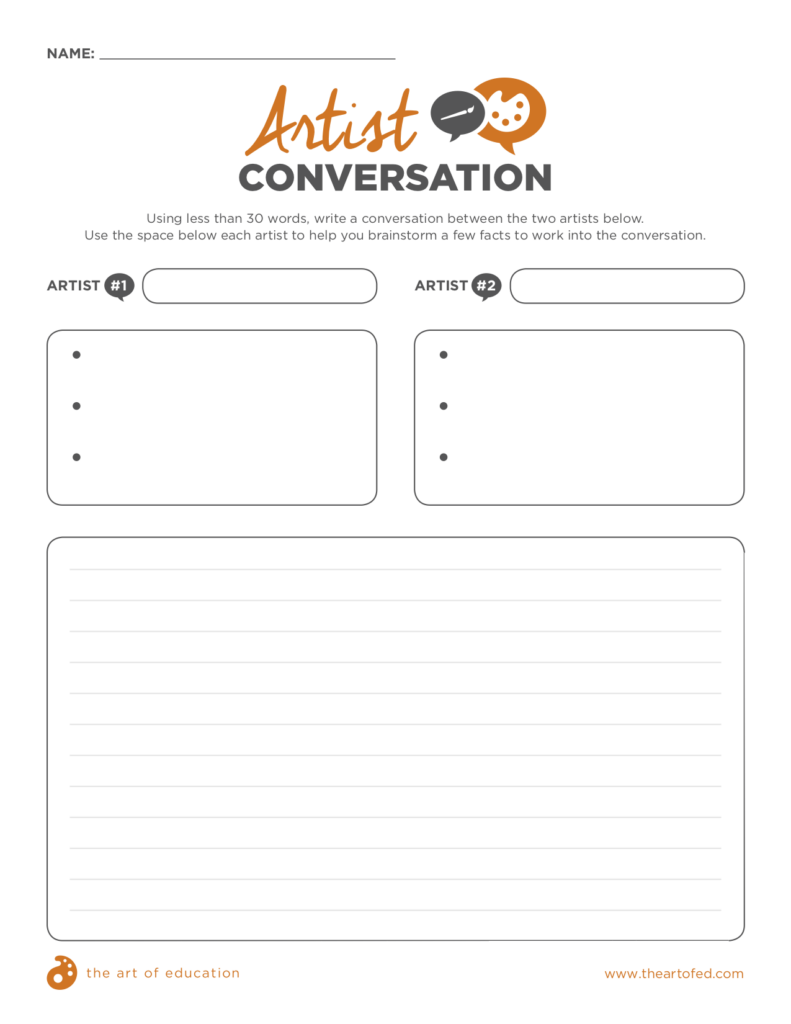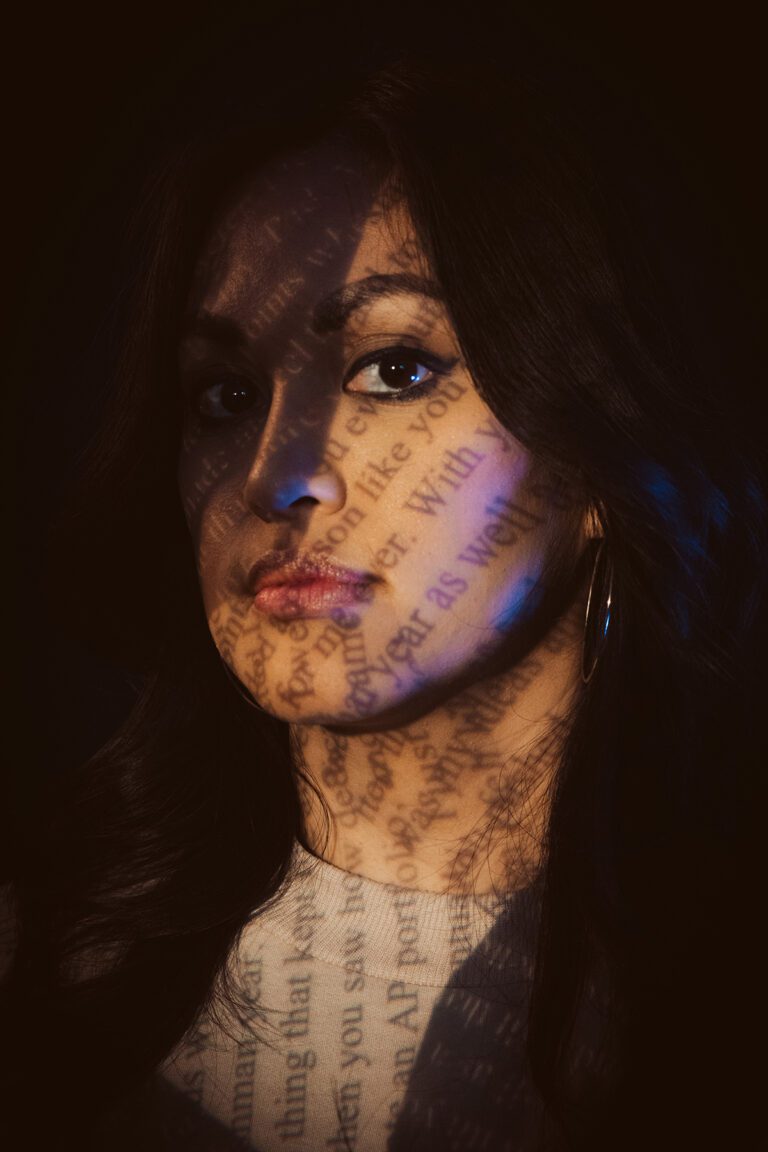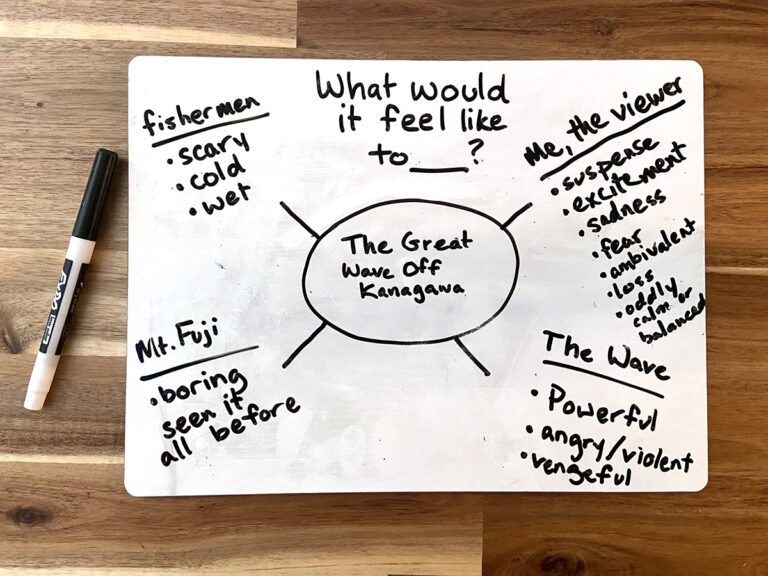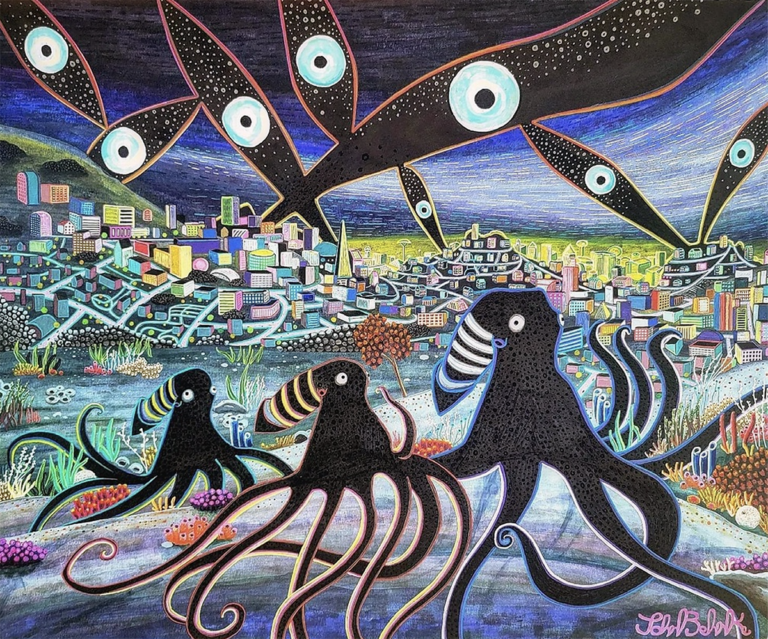Do you remember sitting in a dark room, watching works of art flash on the screen as you scribbled down notes? All the while, hopeful that you would remember the information for the test?
While I have fond memories of my art history professor, it wasn’t until I started teaching that I really began to learn, understand, and love art history.
If you’re looking for an activity to make art history fun, meaningful, and memorable, look no further.
Introducing Artist Conversations
This activity makes art history fun, meaningful, and memorable and couldn’t be easier to set up. The idea is to have your students write super short conversations between paired artists. I like to give students a target word count to keep the conversation focused. A limit of twenty-five words usually works well, although some students may choose to use slightly more.
You can use this activity to help students review information, analyze art, or respond to information.
If you’re looking for even more great ways to bring art history into your classroom, don’t miss the Make the Most of Art History in the Elementary Art Room and the Implementing Art History in the Secondary Art Room Learning Packs! You’re sure to find something that will fit your needs!
Here’s how to get started
For this activity, students can work individually or in small groups.
- Create pairs of artists.
One way to do this is to put a list of artist names into a bowl and have students pull out two names. Or, you can create pairs of artists ahead of time and assign them to students. When coming up with combinations, you can focus on just artists, or add in people who commissioned works of art as well. - Give work time.
Once students have their two artists, allow them time to research and write the conversation.
If you’d like to try this activity in your room, download the form below to use with your students!
Here are a few sample conversations.
A conversation between Da Vinci and a Cave Painter.
Da Vinci: “Explain this sketch to me, caveman.”
Cave Painter: “It isn’t a sketch, it’s the finished product.”
Da Vinci: “Surely you’re not done. There isn’t even any religious symbolism.”
Cave Painter: “Da Vinci, there isn’t supposed to be any complex symbolism. It’s just a painting.”
Da Vinci: *confused wailing*

A conversation between Julius II and Michelangelo:
Julius II: “Michelangelo, I have something to request of you.”
Michelangelo: “Of course, what is it?”
Julius II: “I’d like you to do a painting, but with a twist.”
Michelangelo: “What kind of twist are you talking about?”
Julius II: “I kind of want it painted on the ceiling, lol.”
After students write their conversation, take the lesson further by having students act them out, create videos, or add illustrations.
Having students imagine and write conversations between a variety of artists requires students to apply their knowledge, demonstrating what they learned, instead of memorizing facts. Plus, they’re fun for students to write and enjoyable for you to read.
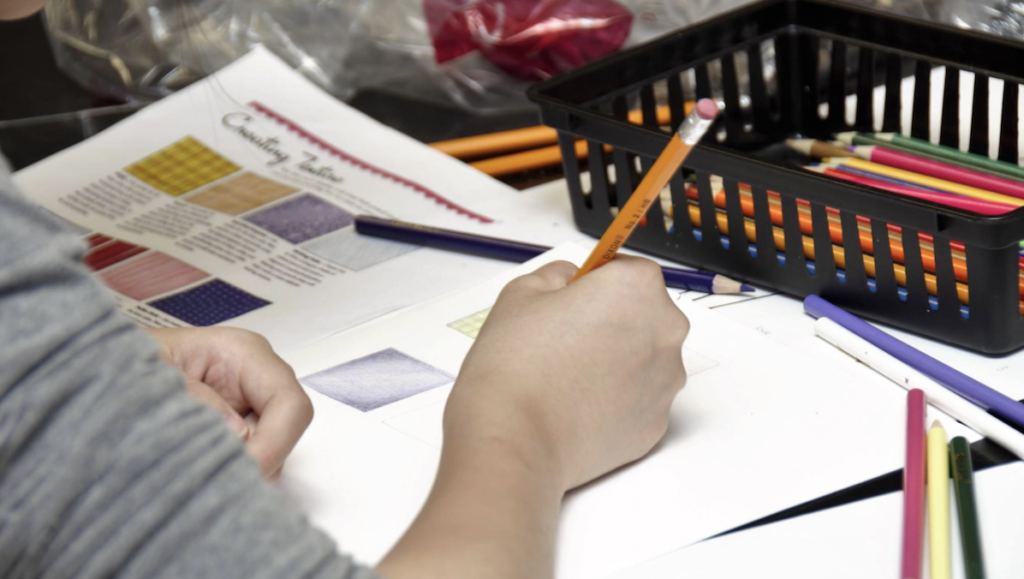
Da Vinci: “You’ve made a mistake, sir. Your cow has two front legs coming from the same side. Anatomy and spatial rules dictate that this leg should be partly hidden by the other leg.”
Cave Painter: “But then it’s not a cow. Cows have two legs on each side; I can’t show a cow with a front leg and a half.”
Da Vinci: “It won’t be a leg and a half, it will be one leg behind the other.”
Cave Painter: “But cows have two complete front legs, so therefore I must paint two complete front legs on this cow.”
Da Vinci: *angry, incoherent Italian grumbles*
Leave a comment and write a conversation using this as your prompt: What would a caveman say about Jeff Koons’ Balloon dog?
What are some fun and creative ways you bring art history into your art room?
Magazine articles and podcasts are opinions of professional education contributors and do not necessarily represent the position of the Art of Education University (AOEU) or its academic offerings. Contributors use terms in the way they are most often talked about in the scope of their educational experiences.

